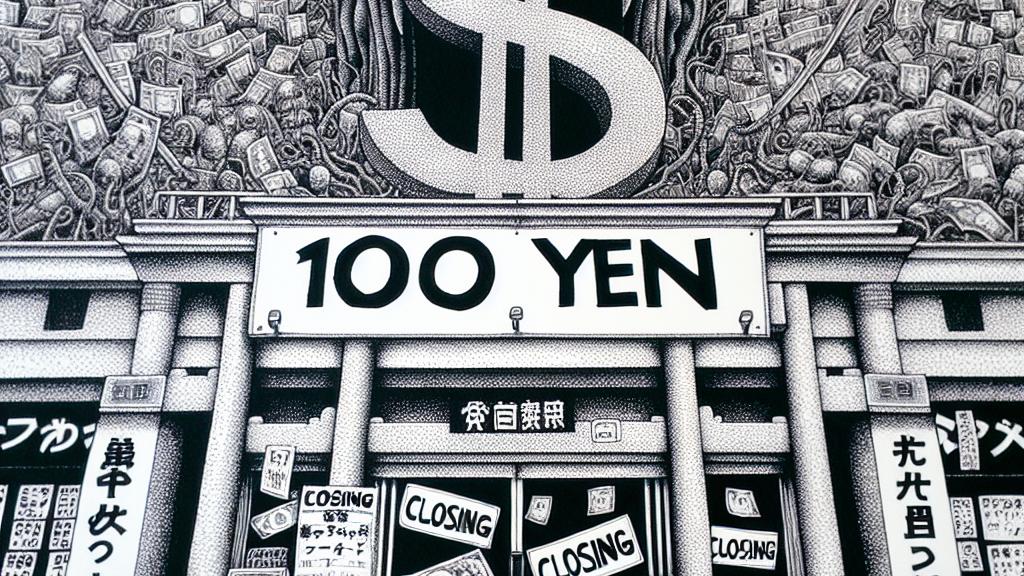The Great 100 Yen Shop Collapse: Seria's Shocking Shutdowns Amid Currency Crush!
Overview
- Seria faces unprecedented store closures, despite achieving record sales figures.
- The drastic yen depreciation has led to soaring import costs, threatening the company's business model.
- Consumers voice concerns about the significant role 100 yen shops play in daily Japanese life.

The Crisis at Seria: A Retail Giant in Jeopardy
In Japan, the 100 yen shop sector, which has been a staple for budget-conscious shoppers, is facing turmoil as Seria, a leading brand in this industry, experiences a drastic increase in store closures. Having reached remarkable sales of around 223 billion yen, the company finds itself closing 69 stores this year—an increase of 26 closures from last year. This disturbing trend is a direct consequence of the ongoing depreciation of the yen, which peaked at a staggering 160 yen per U.S. dollar. With nearly all products imported, the impact of the weak yen on acquisition costs has been severe, forcing Seria to reassess its viability in the current market landscape. While their success in sales suggests a demand for their offerings, soaring import costs present a dilemma for the company that could lead to further financial strain.
Economic Pressure and Strategic Adaptation
The significant rise in import costs—often resulting in price increases of up to 50%—has placed Seria in a precarious position. The company's long-standing practice of maintaining a uniform price of 100 yen for items is becoming increasingly untenable. As operational costs continue to rise without a corresponding increase in income, the pressure to adapt has never been more pronounced. Competitors, particularly DAISO, are adjusting by diversifying their product ranges and introducing higher-priced items, effectively breaking away from the 100 yen model that Seria has staunchly defended. This competitive disadvantage could lead to a decline in market share for Seria if they continue to resist necessary changes, such as exploring new pricing strategies or product categories that align better with current economic realities.
Cultural Significance and Consumer Sentiment in Crisis
The emotional reactions from consumers highlight the cultural significance of 100 yen shops in Japanese society. As Seria's closures become more frequent, many shoppers are taking to social media to express their dismay, lamenting the potential loss of a convenient and familiar shopping experience. Messages filled with concern and disbelief illustrate how these shops are deeply embedded in people's lives, functioning not only as retail outlets but as community hubs that provide affordable goods. The resolute calls from consumers for the survival of Seria reflect a broader concern over economic access in their daily routines. This compelling narrative emphasizes a major question: can Seria adapt to the swiftly changing market conditions while maintaining the loyalty of customers who rely on these shops for their value-driven offerings?

Loading...